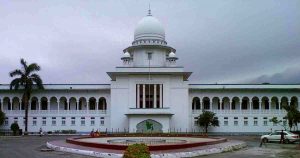Quacquarelli Symonds revealed the QS World University Rankings 2019. The list ranks the educational institutions doing the most to advance science, invent new technologies and help drive the global economy. Russia is now home to more top-300, top-400 and top-500 universities. This year Russia has 27 universities in the rankings, 17 of them are Russian Academic Excellence Project (Project 5-100) participants.
“Russian universities have recorded consistent improvements in the latest edition of one of the world’s most-consulted international university rankings, offering a testament to the growing global competitiveness of the nation’s higher education system.”– said QS.
The fifteenth edition of the QS World University Rankings, released by global higher education analysts QS Quacquarelli Symonds, sees 70% of Russia’s 27 ranked universities improve their position. Of Russia’s 27 ranked universities, 19 made improvements in this year’s list. 3 are newly-ranked, and 4 remain stable within their band or in their position.
MSU (90th) has come top of the QS World University Rankings among Russian universities.
This university rises from 95th to 90th. Saint-Petersburg State University (235th) was ranked second in Russia, and Novosibirsk State University (244th), Project 5-100 participant, took the 3d place. Another Project 5-100 university, Tomsk State University (TSU), rose into the top 300 on the annual list. Thus, a ranked list of the top 300 also includes two Russian universities: TSU (277th) (Tomsk) and BMSTU (299th) (Moscow).
Furthermore, most Russian universities featured in the rankings show the highest ranks held by any of them in the rank since QS started compiling the rankings alone.
Russia’s 17 flagship universities from Russian Academic Excellence Project have made significant gains. Top 400 of the world’s best universities includes MIPT (312th) (Moscow), MEPHI (329th) (Moscow), HSE (343rd) (Moscow), TPU (373rd) (Tomsk). SPbPU (404th) (Saint-Petersburg), UrFU (412th) (Yekaterinburg), KFU (439th) (Kazan). RUDN University (266th), NUST MISiS (476th) feature in the top 500 universities.
Lobachevsky University (Nizhny Novgorod) and Samara University have even managed to climb more than 100 places. FEFU (Vladivostok), RUDN University (Moscow), ITMO University (Saint-Petersburg), UrFU are among one of the most fastest-rising Russian universities too, they have made particularly impressive gains over the last years, jumping an average of 50 places in this year’s ranking. MIPT, TSU, MEPHI have made also a rapid ascent, these universities have improved their positions by more than 40 places.
SIBFU and SUSU have appeared for the first time in this prestigious international league table. Before only two Russian universities – Lomonosov Moscow State University and Saint Petersburg State University – were well-known globally. Meanwhile, leading Russian institutions are rapidly rising up the table. Now, thanks to the Project 5-100, this list is expanded significantly. And this is an objective fact which is also confirmed by results of the QS World University Rankings 2018.
These universities held fast to top-300, top-400 and top-500 by consistently producing new patents and papers that influence researchers elsewhere in academia and in private industry.
Russia’ leading universities success can be attributed to improved performances across a range of indicators. This year’s results of Russian universities show that employer reputation, international student, faculty/student ratio, and big breakthroughs can drive universities way up the list.
QS World University Rankings show the following statistics on Russia’s leading universities participating in the Russian Academic Excellence Project (Project 5-100):
• “Faculty/Student Ratio”: 8 universities are included in the top 100.
• “International Student Ratio”: 7 universities are included in the top 300. RUDN University (Moscow) has the highest rank, and now it is closer to the world’s top 100 universities with its 104th place.
• “Employer Reputation”: this indicator shows a positive picture for a number of universities.
Why do the Project 5-100 universities show such positive results? According to the findings, consistency is key, with truly innovative educational institutions putting out groundbreaking work, continuous improvement in education as a priority objective in educational management, and in managerial practices year after year.
Besides scientific work (including participation in joint projects with leading research and educational centers, opening advanced laboratories, research relevant on the global stage, participation in mega-collaboration, etc. ), the Project 5-100 universities pay a lot of attention to improving education quality (development of joint educational programs, double degree programs, English programs, creating online courses on international education platforms Coursera, edX, and the like.
The third important area is internationalization. In recent years the number of foreign students and faculty members in the Project 5-100 universities increased significantly. For example, in 2017, one in five (19%) foreign students in Russian state universities studied in the Project 5-100 universities, and over a half of foreign faculty members (53%) in Russian universities worked in the Project 5-100 universities.
These measures encourage publication activity and ensure a gradual increase in the number of publications in high-impact scientific journals. There are some figures:
• Since 2012, the Project 5-100 universities have demonstrated a significant increase in the number of publications indexed in databases Web of Science and Scopus. On average, in 2012-2017, the number of publications by all Project 5-100 universities in Web of Science increases by 4.5 times, in Scopus – almost by 4 times.
• The overall amount of Russian publications in Web of Science and Scopus rose by 2 times in 2012-2017.
• The share of publications by the Project 5-100 universities in overall Russian publications indexed in Web of Science and Scopus grow steadily: in 2012, the share of their publications in overall Russian publications indexed in Web of Science and Scopus was about one-sixth, but in 2017 it’s more than a third;
• In 2012-2017, the average amount publications by the Project 5-100 universities, included in world’s 10% most cited academic publications, increased almost by 4.5 times, the number of publications included in world’s 1% most cited academic publications – almost by 6 times. In 2012-2017, overall highly cited Russian publications increased by more than 2.5 times. The share of highly cited publications by the Project 5-100 universities in overall highly cited Russian publications comes to 50% (both in the top 1% and top 10%).
• The share of publications by the Project 5-100 universities in overall Russian publications in top Scopus journals also continues to grow: top 1% – from 10% to 48% in top journals, top 10% – from 23% to 45% in top journals.
Source: Varvara Novikova, Head of PR Department




